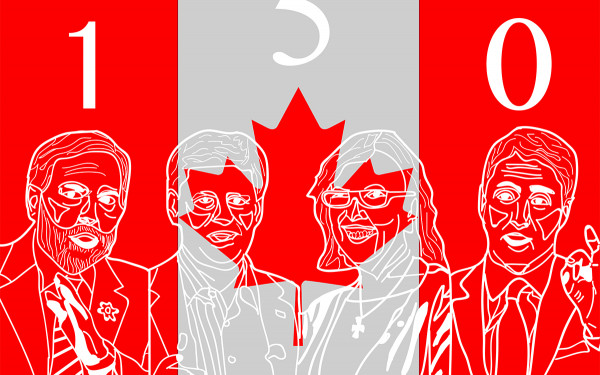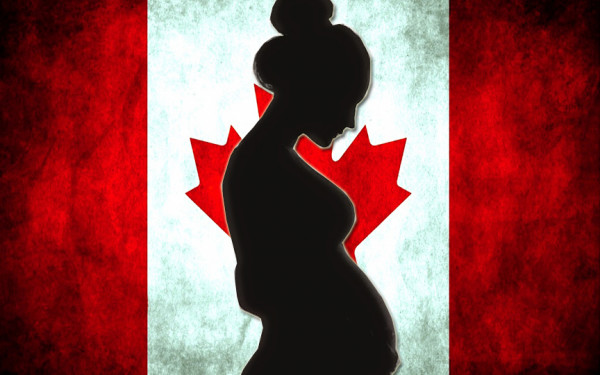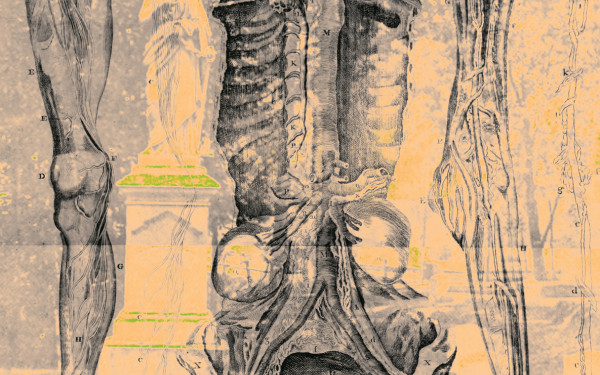Peoples’ History: Step Aside Fab Five, and Make Way for the Famous Five
How Emily Murphy and Her Colleagues Paved the Way for Women in the Senate
Picture it: Edmonton, 1916, and you’re Emily Murphy, a Canadian feminist and activist.
A woman is being tried after being accused of prostitution, and you’d like to sit in on the proceedings. You, alongside the other women in attendance, are ejected on the grounds that this testimony is “not fit for mixed company.”
Thus begins Murphy’s fight—one that would end in drastic changes to the way Canada’s constitution is applied in the Supreme Court.
Upon her ejection from the trial concerning the woman accused of prostitution, Murphy protested to the attorney general. With her success in fighting for the Dower Act, which protects a spouse whose name is not on the title to their property, Murphy was already a well-known figure in the political sphere.
“If the evidence is not fit to be heard in mixed company, then the government must set up a special court presided over by women, to try other women,” she wrote.
To her surprise, the minister agreed with her and appointed her as magistrate—making her the first female magistrate in Canada and in the British Empire. This only to have her authority as a judge challenged by a lawyer on her very first day, on the basis that, under Section 24 of the British North America Act, women were not considered “qualified persons.”
The act used the word “persons” when referring to more than one person and “he” when referring to one person. This enabled the argument that only a man could be a person, preventing women from participating fully in politics.
Murphy was a published author, a pioneer in the war on drugs, and an activist who fought for spousal rights—but under the BNA Act, she was not a person.
Fast forward to 1917. In response to a gender-based challenge to a ruling by Judge Alice Jamieson of Calgary, women were ruled to be “persons” by the Supreme Court of Alberta. Hallelujah!
With this in mind, Murphy tested the issue in the rest of Canada by letting her name go to Prime Minister Robert Borden as a candidate for senator.
As expected, she was rejected on the grounds that women still did not qualify as “persons” under the BNA Act, even if they were in Alberta.
By May 1918, the majority of Canadian women over the age of 21 had become eligible to vote in federal elections. The following year, they could stand for office in the House of Commons, and, in 1921, Agnes MacPhail became the first woman elected to the House of Commons.
However, because of the way the Canadian government interpreted Section 24 of the BNA Act, women were still prevented from sitting in the Senate.
The interpretation was based on a British common law ruling of 1876 that stated: “women were eligible for pain and penalties, but not rights and privileges.”
In the meantime, the campaign to get a woman into Senate was gaining traction nationwide. Nearly 500,000 Canadians signed a petition in support of her cause, asking that Murphy be appointed to Senate.
Borden and William Lyon Mackenzie King, a subsequent prime minister, both stated that they would like to appoint Murphy but because of this ruling simply could not. Regardless of whether this was truly how they felt, as far as the federal government was concerned there seemed to be no hope for Murphy’s Senate dreams.
Despite her popularity and numerous achievements, it was clear that until the interpretation of the British North America Act could be changed, there would be no place for her—or any woman—in the Senate.
Never one to sit around and wait for things to change, Murphy set out to change it herself.
Alongside her brother, a lawyer, she laid out a plan to ask the Supreme Court for constitutional clarification. To submit this question, it had to be signed by a group of at least five.
Enter the Famous Five.
Murphy and four other women—Henrietta Muir Edwards, Nellie McClung, Louise McKinney, and Irene Parlby—met for tea at Murphy’s home on Aug. 27, 1927, where they signed the petition to the Supreme Court of Canada.
The petition posed two questions relating to the status of women: “Is power vested in the Governor-General in Council of Canada, or the Parliament of Canada, or either of them, to appoint a female to the Senate of Canada?” “Is it constitutionally possible for the Parliament of Canada under the provisions of the British North America Act, or otherwise, to make provision for the appointment of a female to the Senate of Canada?”
“Does the word ‘persons’ in Section 24, of the British North America Act, 1867, include female persons?”
The Department of Justice ignored these questions, suggesting to then Prime Minister King that they submit the following instead: “Does the word ‘persons’ in Section 24, of the British North America Act, 1867, include female persons?”
The question was presented to the Supreme Court on March 14, 1928, Murphy’s sixtieth birthday. The debate lasted the day, and, on April 24, 1928, the Court presented its decision.
The formal judgment of the court was as follows: “Understood to mean ‘Are women eligible for appointment to the Senate of Canada,’ the question is answered in the negative.”
Unsatisfied with this quick dismissal of their cause, the five women decided to push further by bringing their appeal to the Judicial Committee of the Privy Council in London, widely considered the true supreme court of Canada under the British Empire.
Their appeal was made with the approval of Prime Minister King, and with his financial support as well. King’s government covered their legal fees, amounting to $23,368.47, $21,000 of which was for the appeal itself.
After months of anxiously awaiting the Privy Council’s decision, on Oct. 18, 1929, the Famous Five received the answer they’d fought long and hard for.
“Their Lordships have come to the conclusion that the word ‘persons’ in Section 24 includes members both of the male and female sex and that, therefore, the question propounded by the Governor-General must be answered in the affirmative and that women are eligible to be summoned to and become members of the Senate of Canada, and they will humbly advise His Majesty accordingly.”
Lord Chancellor of Great Britain John Sankey announced the decision, stating, “The exclusion of women from all public offices is a relic of days more barbarous than ours. And to those who would ask why the word ‘person’ should include females, the obvious answer is, why should it not?”
Despite all of her and her colleagues’ hard work, Murphy herself was never formally appointed to Senate, nor were any of the other four women.
With Murphy’s blessing, the first woman to be appointed to Senate was Cairine Wilson of Montreal on Feb. 15, 1930.
Later, Wilson would go on to become Canada’s first woman delegate to the United Nations. In 1950, in recognition of her work with child refugees, she received the Cross of the Knight from France’s Legion of Honour. In 1955, she was the first woman to become Deputy Speaker of the Senate.
The Famous Five became senators in their own right with honorary appointments in October 2009. The motion was brought forth by Senator Ethel Cochrane and seconded by Senator Consiglio Di Nino.
It passed unanimously, cementing the Famous Five in history yet again, this time as the first people ever to be named honorary senators.
In the debate, the Honorable Claudette Tardif, deputy leader of the opposition, addressed the duress faced by Murphy and her colleagues, stating that she was impressed by their nearly 10-year fight.
“Emily Murphy, Nellie McClung, Irene Parlby, Louise McKinney, and Henrietta Muir Edwards, this is your rightful place.”


_600_832_s.png)


1_600_375_90_s_c1.jpg)

